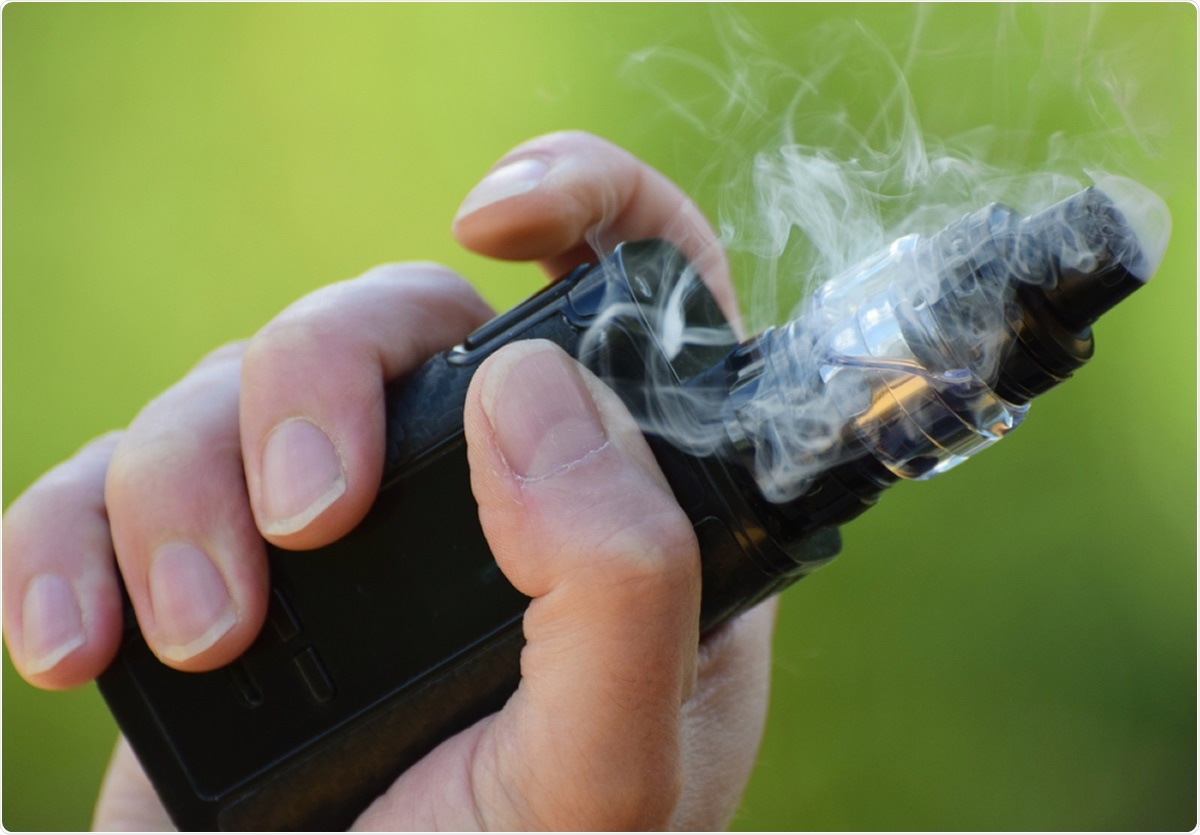A new study by Californian researchers has shown that youth and teenagers who use electronic cigarettes are five times more likely to be affected by COVID-19 disease, and those that use both electronic and traditional cigarettes are seven times more likely to get the infection. With the COVID-19 pandemic raging across the world since the beginning of this year, these findings are significant and concerning. Their study titled, “Association Between Youth Smoking, Electronic Cigarette Use, and Coronavirus Disease 2019,” was published in the latest issue of the Journal of Adolescent Health.
Researchers included postdoctoral scholar Shivani Mathur Gaiha and Professor Bonnie Halpern-Felsher from the Division of Adolescent Medicine, Department of Pediatrics, Stanford University, and Jing Chen from Division of Oral Epidemiology and Dental Public Health, University of California. This study was funded by the Taube Research Faculty Scholar Endowment to one of the researchers and a grant from the National Heart, Lung, and Blood Institute (NHLBI) and the Food and Drug Administration Center for Tobacco Products.

What was this study about?
To date, over 5.24 million people in the United States have been infected with the severe acute respiratory syndrome coronavirus 2 (SARS-CoV-2) that causing COVID-19 disease. The virus has killed over 167,000 individuals in the U.S. alone. The researchers wrote that it is well known that electronic cigarettes, as well as cigarettes, can damage the respiratory system, and this can raise the risk of getting more severe symptoms associated with COVID-19.
The team explains that even though young persons and teenagers are a lower risk of getting severe symptoms of COVID-19 compared to adults and elderly, the use of cigarettes and e-cigarettes could raise their risk of getting severe symptoms of COVID-19. This, however, has not been proven in a study in the United States, they wrote. This study was a population-level study to look at the association of cigarette or e-cigarette use among the youth and their risk of experiencing COVID-19–related symptoms and getting a COVID-19 positive diagnosis.
What was done?
This was a nationwide online survey of adolescents and young adults aged between 13 and 24 years between 6th and 14th May 2020 in the USA. The survey was conducted using a survey technology platform called Qualtrics via a 15 to 20-minute questionnaire. Among participants, the distribution of smokers was as follows;
- 33.7 percent aged between 13 and 17 years; 41.6 percent aged between 18 and 20 years and 24.7 percent aged between 21 and 24 years.
- 50.2 percent of participants who had ever used e-cigarettes
- 49.8 percent had never used e-cigarettes
- There were equal representations of both sexes and major races and ethnicities
- The survey asked questions about use over the past 30 days of cigarettes only, e-cigarettes only, and dual use of e-cigarettes and cigarettes
Other factors, such as demographic status, social factors, obesity, etc. were also recorded. Along with this, the diagnosis status of COVID-19 and symptoms of the infection was also enquired. A total of 4351 participants were included in the analysis.
What was found?
The researchers found,
- COVID-19 diagnosis was five times more likely among ever-users of e-cigarettes
- It was seven times more likely among ever users of both e-cigarettes and cigarettes
- 6.8 times more likely among those who had used both in the past 30 days
- Those who had used both forms of cigarettes in the past 30 days were 4.7 times more likely to have symptoms of COVID-19
- Those who had used both forms of cigarettes in the past 30 days were 9 times more likely to be tested for COVID-19
- Those who had used only cigarettes in the past 30 days were 2.6 times more likely to be tested for COVID-19
Conclusions and implications
The researchers wrote that the use of e-cigarettes, especially along with cigarettes, could be associated with increased risk of COVID-19 and suggest the need for “screening and education.” They wrote, “Health care providers, parents, schools, community-based organizations, and policymakers must help make youth aware of the connection between smoking and vaping and coronavirus disease.” They also called for the Food and Drug Administration to help regulate the use of e-cigarettes during the COVID-19 pandemic.
Study lead author postdoctoral scholar Shivani Mathur Gaiha said, “Young people may believe their age protects them from contracting the virus or that they will not experience symptoms of COVID-19” but is not true she said adding, “It’s not just a small increase in risk; it’s a big one.”
Study senior author Bonnie Halpern-Felsher, a professor of Pediatrics, said that many of the youth could be “in the backyard with a friend sharing their vaping product.” She said, “It might also be that youth vaping/smoking increases exposure to the virus as youth often share their e-cig devices, or the hand-to-mouth action, whereby you can touch the virus and then your hands…Also, the large plume of aerosol could carry the virus in the aerosol and then be breathed in deep in the lungs.” “I wasn’t surprised by the findings in general, but I didn’t expect to see a five to seven times higher risk of being diagnosed with COVID-19,” Halpern-Felsher said.
Halpern-Felsher said in conclusion, “I really hope that teens and young adults recognize that vaping and vaping/smoking is harmful and that e-cigs aren’t harmless water or flavored water vapor. There are real consequences to vaping, and I really hope youth won’t start or will stop vaping.”
